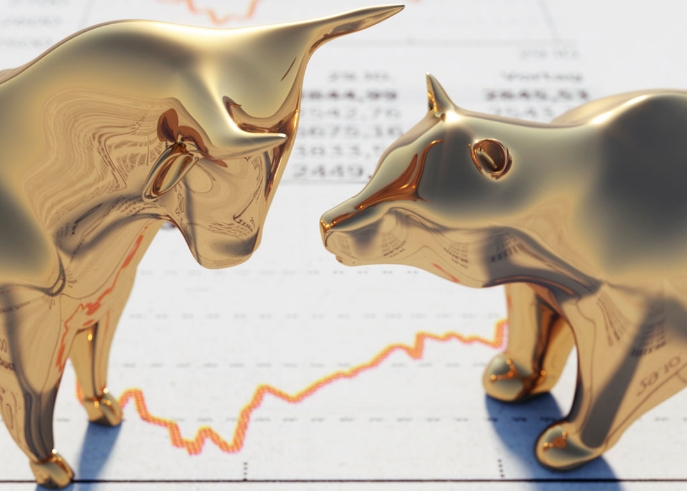Understanding Earnings Per Share: A Key Indicator for Stock Investors
Monday, Nov 18, 2024 8:15 pm ET
Introduction
Investing in the stock market can be both exciting and daunting. One of the fundamental concepts investors should understand is Earnings Per Share (EPS). This metric is crucial for evaluating a company's financial health and making informed investment decisions. In this article, we'll explore what EPS is, why it matters to investors, and how it influences stock market movements.
Core Concept Explanation
Earnings Per Share (EPS) is a financial metric that indicates how much profit a company makes for each share of its stock. It is calculated by dividing the company’s net income by the number of outstanding shares. EPS is important because it provides a way to assess a company's profitability on a per-share basis, making it easier to compare with other companies.
EPS = (Net Income - Dividends on Preferred Stock) / Average Outstanding Shares
There are two types of EPS: basic and diluted. Basic EPS uses the current number of shares, while diluted EPS accounts for all convertible securities, such as stock options and convertible bonds, which could potentially increase the number of shares.
Application and Strategies
Investors often use EPS to gauge a company's profitability and potential for growth. A higher EPS indicates a more profitable company, which might suggest a strong investment opportunity. Conversely, a declining EPS can be a red flag, signaling potential financial troubles.
Strategies Based on EPS:
Comparative Analysis: Investors compare EPS across companies in the same industry to identify the most profitable ones. A company with a consistently high EPS compared to its peers might be more attractive.
Growth Rates: Look at the EPS growth rate over time. A steadily increasing EPS suggests that a company is growing its profits, which can be a positive sign for investors.
Price-to-Earnings (P/E) Ratio: This ratio, derived from dividing the stock price by EPS, helps investors determine if a stock is over or undervalued compared to its earnings.
Case Study Analysis
Consider the case of Company XYZ, a tech firm that saw its EPS grow from $2.00 to $3.50 over three years. This growth was driven by increased sales and operational efficiency. As a result, investors who recognized this positive trend early on and invested in the company enjoyed significant returns as the stock price followed suit, driven by the market's confidence in the company's profitability.
Risks and Considerations
While EPS is a valuable metric, it's not without its limitations. Here are some risks and considerations to keep in mind:
Accounting Changes: Companies can sometimes manipulate EPS through accounting changes or share buybacks, which might not reflect true profitability.
Short-term Focus: Relying solely on EPS might encourage a focus on short-term profits rather than long-term growth.
Industry Differences: EPS should be considered alongside other metrics, especially when comparing companies across different industries.
To mitigate these risks, investors should conduct comprehensive research and consider additional financial ratios and metrics, such as return on equity (ROE) and debt-to-equity ratio, to get a fuller picture of a company's financial health.
Conclusion
Earnings Per Share is a fundamental concept that provides insight into a company’s profitability and financial performance. By understanding and utilizing EPS, investors can make more informed decisions and identify potentially rewarding investment opportunities. However, it’s essential to consider EPS alongside other factors and metrics, and to approach investing with a well-rounded strategy. Remember, thorough research and risk management are key to successful investing.
Investing in the stock market can be both exciting and daunting. One of the fundamental concepts investors should understand is Earnings Per Share (EPS). This metric is crucial for evaluating a company's financial health and making informed investment decisions. In this article, we'll explore what EPS is, why it matters to investors, and how it influences stock market movements.
Core Concept Explanation
Earnings Per Share (EPS) is a financial metric that indicates how much profit a company makes for each share of its stock. It is calculated by dividing the company’s net income by the number of outstanding shares. EPS is important because it provides a way to assess a company's profitability on a per-share basis, making it easier to compare with other companies.
EPS = (Net Income - Dividends on Preferred Stock) / Average Outstanding Shares
There are two types of EPS: basic and diluted. Basic EPS uses the current number of shares, while diluted EPS accounts for all convertible securities, such as stock options and convertible bonds, which could potentially increase the number of shares.
Application and Strategies
Investors often use EPS to gauge a company's profitability and potential for growth. A higher EPS indicates a more profitable company, which might suggest a strong investment opportunity. Conversely, a declining EPS can be a red flag, signaling potential financial troubles.
Strategies Based on EPS:
Comparative Analysis: Investors compare EPS across companies in the same industry to identify the most profitable ones. A company with a consistently high EPS compared to its peers might be more attractive.
Growth Rates: Look at the EPS growth rate over time. A steadily increasing EPS suggests that a company is growing its profits, which can be a positive sign for investors.
Price-to-Earnings (P/E) Ratio: This ratio, derived from dividing the stock price by EPS, helps investors determine if a stock is over or undervalued compared to its earnings.
Case Study Analysis
Consider the case of Company XYZ, a tech firm that saw its EPS grow from $2.00 to $3.50 over three years. This growth was driven by increased sales and operational efficiency. As a result, investors who recognized this positive trend early on and invested in the company enjoyed significant returns as the stock price followed suit, driven by the market's confidence in the company's profitability.
Risks and Considerations
While EPS is a valuable metric, it's not without its limitations. Here are some risks and considerations to keep in mind:
Accounting Changes: Companies can sometimes manipulate EPS through accounting changes or share buybacks, which might not reflect true profitability.
Short-term Focus: Relying solely on EPS might encourage a focus on short-term profits rather than long-term growth.
Industry Differences: EPS should be considered alongside other metrics, especially when comparing companies across different industries.
To mitigate these risks, investors should conduct comprehensive research and consider additional financial ratios and metrics, such as return on equity (ROE) and debt-to-equity ratio, to get a fuller picture of a company's financial health.
Conclusion
Earnings Per Share is a fundamental concept that provides insight into a company’s profitability and financial performance. By understanding and utilizing EPS, investors can make more informed decisions and identify potentially rewarding investment opportunities. However, it’s essential to consider EPS alongside other factors and metrics, and to approach investing with a well-rounded strategy. Remember, thorough research and risk management are key to successful investing.
















